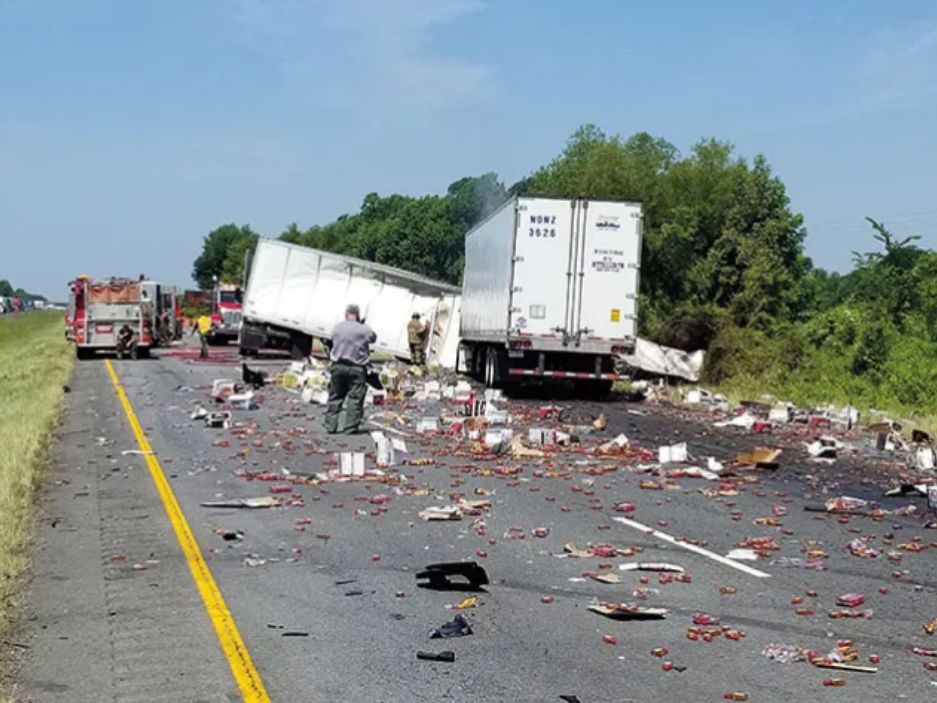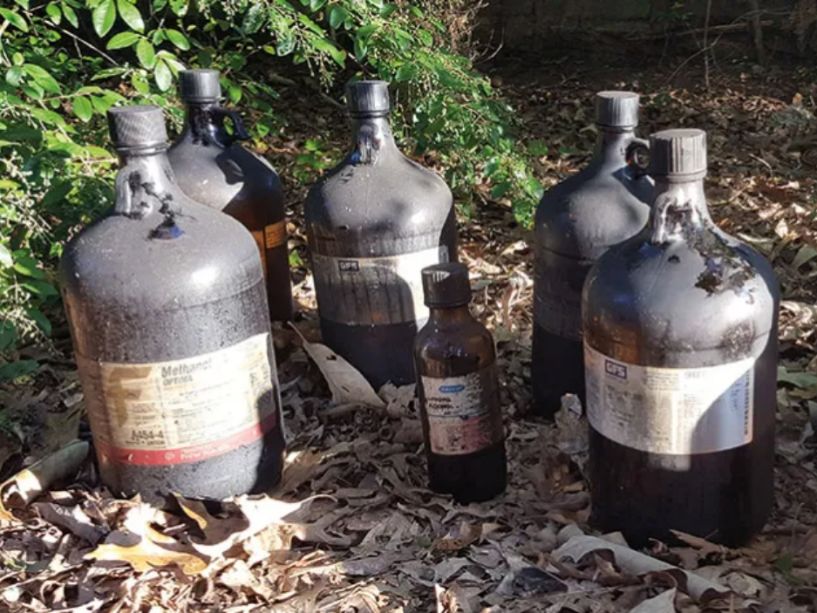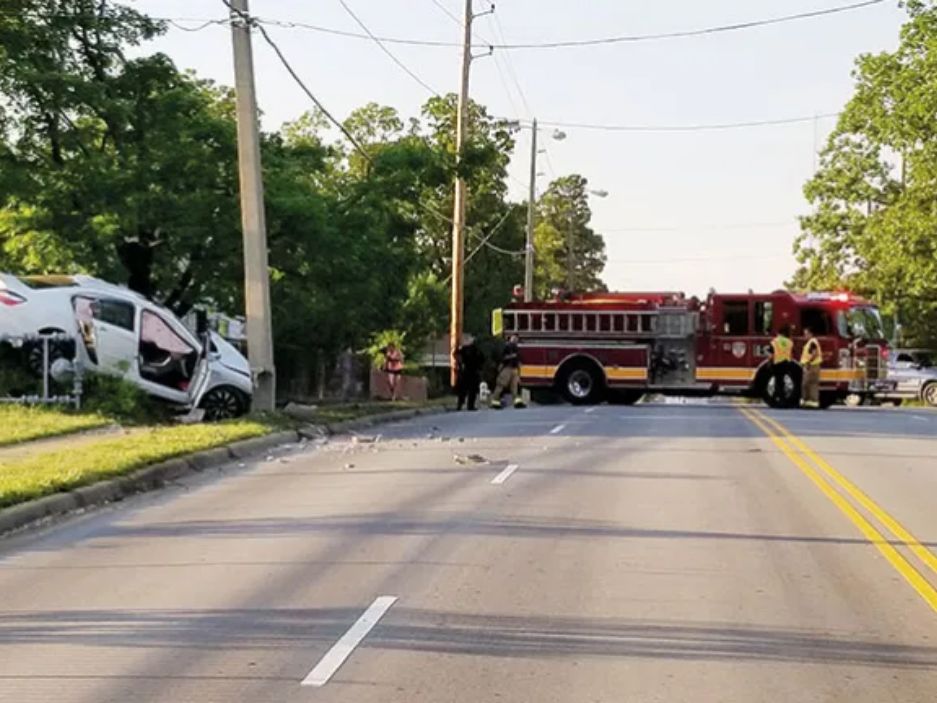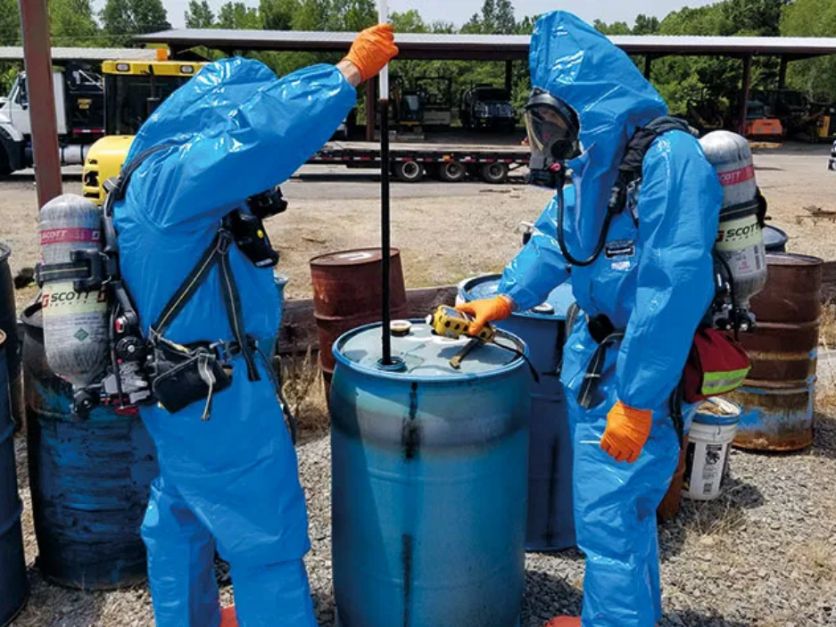Originally published on ASIA PACIFIC FIRE
What is considered a hazmat incident?
What do you think of when you hear the term hazmat? Leaking barrels of liquid? Glowing green people? How about a vehicle accident with oil, fuel and antifreeze on the ground? Or a husband and wife found unconscious in their yard with fertilizer bags near them? Better yet, what about an extinguished structure fire during overhaul operations? The point is, hazardous materials come in various shapes and forms, and involve unique circumstances that may not usually be considered when responding. A hazardous material is one that if released, in any quantity, could cause harm to people, property or the environment. Incidents involving hazardous substances such as flammables, toxins, explosives or radioactive materials can occur during production, transportation or use. What is your size-up to these emergencies?

Initial size-up
As students in the fire service, we were taught early in our careers to stage uphill, upwind and upstream from incidents involving possible hazardous materials. Are these questions you still ask yourself or even consider when responding to these types of emergencies? If you are dispatched to a multi-vehicle accident, more often than not, you are concerned with traffic flow, fire involvement and passenger injuries rather than any hazmat component. This thought process would change dramatically if we were told that the accident involved a tanker truck covered in DOT placards and was leaking material at the scene.
Evaluation of an incident normally uses a risk-based assessment by which fire-service personnel process all available information systematically in order to size-up the event. A good size-up follows the direction of both NFPA 472 and OSHA 1910.120 by analyzing the incident, identifying products and their hazards, evaluating potential consequences and planning control measures.
Incident analysis
Location
How do we begin our hazmat response size-up? Just like we would any fireground size up, with the initial dispatch report. What information do we get? Typically, we receive the incident location or address first. What flashes through our mind if this were a structure fire? Is this residential or commercial, what type of construction, and is it occupied may be our first considerations even before we arrive. The same goes for a hazardous materials emergency. Where is the emergency located (facility, highway, shipyard, railroad)? Hopefully you have done some due diligence in your response area and know of any locations that carry and/or transport hazardous materials. The dispatcher information will be your first indicator of whether or not you could potentially have a hazmat release. If the emergency came in as a railroad accident, do you know if the route normally transports hazardous materials? What if the incident was relayed to you as multiple sick workers at a manufacturing plant, would you know if the plant produced or stored hazardous materials? Your scene location can also tell you what exposures you might have and how a material could spread. For instance, you may have a train carrying toxic gas derail near an elementary school. The potential for injury in such a case could be great depending on the wind direction. On the other hand, you may have a container leaking fluid inside of a sealed lab environment. If the fluid is contained to the room and no one is inside the hazard risk would be low. Always consider topography, population and time of day when sizing-up your incident location.
Container
Just like a fireground scenario, we want to know how the container is constructed and what it is made out of. Similar to building construction, containers are built to hold certain materials and to withstand varying degrees of damage when involved in an accident. As firefighters, we should be able to look at a building and realize how it will be affected by fire, or how it will hold up to severe weather, etc. However, can you do the same with hazardous materials containers? Do you know what a DOT 412 carries? How about an IMO Type 5 shipping container? Can you tell the difference in pressure and non-pressure vessels? Can you tell whether a railcar is jacketed or non-jacketed? All of these questions can clue us in on what hazardous material may be carried and what kind of stress the container can withstand. Collecting this information can help us in our size-up to predict behavior and plan our response.

Product
Is there an actual release of product? Do we have a solid, liquid or gas? Does this create a potentially hazardous situation? With solids, if we don’t touch them or mix them with anything, they tend to be stable. Liquids can be more difficult since they can produce vapors and flow into unwanted places. Gases are the most challenging as they are almost impossible to control. However, knowing the state of matter will help us predict possible behavior, allow us to choose proper personal protective equipment, and estimate endangered areas (i.e. set hot, warm and cold control zones). The product will also dictate our action plan, control measures and decontamination methods. For instance, if we have a large liquid leak, we would need to control run-off by damming or diking, suppress any vapors with a foam blanket, and mitigate by plugging or patching the damaged container.

Putting it all together
The most important action when conducting your hazmat size-up is to identify the material(s) involved. We cannot implement any actions for control or mitigation unless we know what the hazards of our product are. To start the identification process, we must gather information such as location, shipping papers, method of transportation, placards and container shape. The description given at our initial dispatch, along with a quick scan of our incident scene upon arrival, should have given us this information. We should then be able to research what products we have and their inherent dangers, thus allowing us to plan our strategy and tactics for mediation. NFPA 472 states that the hazmat technician should identify materials utilizing detection, sampling and monitoring equipment. First of all, do we have a solid, liquid, gas or a mixture of these? Using our initial size-up and available detection equipment, can we rule these states of matter in or out? Now, will the conditions of the incident cause inhalation or absorption hazards? Does the scene indicate IDLH conditions (i.e. vapor clouds, limited oxygen, flammable, radiological or biological)? You can find these clues by using your senses of sight and sound but remember sight should be utilized through a pair of binoculars. Listen for the hissing of escaping gases, leaking of liquids and creaking of damaged containers. Always do these from a safe distance (cold zone), utilizing all available resources. All of these clues will help you determine whether you have a potential hazmat incident. Now we need to know how serious the threat is. Once we confirm the presence of hazardous materials, we can measure the risks associated with it by following OSHA 1910.120(c)(7). Knowing the risks involved and how the product(s) can harm us enables us to choose appropriate PPE and create an action plan to mitigate the incident.

Like any other emergency size-up, the hazmat incident requires a risk-based thought process in which the responder utilizes all information available to develop an incident action plan that minimizes risk, protects property and mitigates hazards. Hazmat incidents are unpredictable and unforgiving, thus regular training is necessary to educate yourself on recognizing and identifying these emergencies.


